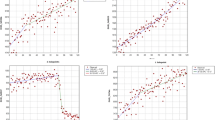Summary
In 1978 the third largest Swedish city, Malmö, known to have the highest suicide frequency in the country, was found to have a higher prescription rate (defined daily doses (DDD) per 1,000 inhabitants per day) of anxiolytic-hypnotic drugs (AHD) than the country, the corresponding county, other counties, and other cities, including the largest (Stockholm) and second largest (Göteborg = Gothenburg) cities.
Barbiturate prescribing in Malmö was 40% higher than in Stockholm and 90% higher than in Göteborg, and the frequency of suicide due to barbiturates was three-times higher than in Göteborg. A small proportion (2.4% of all AHD-prescribing doctors) of private practitioners wrote a large percentage (24%) of all AHD prescriptions.
Prescription surveillance and an information campaign in Malmö were accompanied by a 4-year decrease in AHD prescribing (12%), in AHD abuse (40%), in barbiturate prescribing (45%), and in barbiturate suicides (70%). The total suicide rate was reduced by 25%. There was no corresponding 4-year increase in suicide due to other drugs, or by other means, but after 5 to 7 years there was an increase in suicide by non-pharmacological means.
The contribution of benzodiazepines to the frequency of suicide was very small, whereas their contribution to AHD abuse was considerable.
In Göteborg, where no corresponding intervention was carried out, there was also a reduction in barbiturate prescribing (34%) and in barbiturate suicides (45%), but in contrast there was a continuous increase both in overall AHD and benzodiazepine prescribing, surpassing Malmö after 5 years. Far from a reduction there was a 7-year increase in the overall frequency of suicide.
Apparently, AHD abuse and suicide can be greatly reduced by restricted prescribing of AHD, and this may but need not be accompanied by an increase in suicide by other means. Targeted drug information campaigns may assist in changing prescription patterns and their medical and social impact.
Similar content being viewed by others
References
Prescription Surveys (Svensk Läkemedelsstatistik) (1978–1985) Natl Corp Swedish Pharmacies, Stockholm
Institute for the study of drug dependence (1982) Drug abuse briefing. Redesign, London
Diagnosis and Prescription Survey (1986) Natl Corp Swedish Pharmacies
Isacsson D, Smedby B (1988) Patterns of psychotropic use in a Swedish Community. Scand J Prim Health Care 6: 51–58
Busto U, Kaplan HL, Sellers EM (1981) Age- and sex-related differences in patterns of drug overdose and abuse. Soc Sci Med 15E: 275–282
Sellers EM, Marshman JA, Kaplan HL, Giles HG, Kapur BM, Busto U, MacLeod SM, Stapleton C, Sealy F (1981) Acute and chronic drug abuse emergencies in metropolitan Toronto. Inter J Addictions 16: 283–303
Brahams D (1990) Benzodiazepine overprescribing: successful initiative in New York State. Lancet II: 1372–1373
Central Bureau of Statistics, Stockholm, Sweden
Guidelines for ATC Classification. Nordic Statistics on Medicines 1981–1983, Part 3, Uppsala, Sweden
Wessling A, Bergman U, Westerholm B (1991) On the difference in psychotropic drug use between the three major urban areas in Sweden. Eur J Clin Pharmacol 40: 495–500
Quick Reference to the Diagnostic Criteria from DSM-III-R (1987) Am Psychiat Assoc
Author information
Authors and Affiliations
Rights and permissions
About this article
Cite this article
Melander, A., Henricson, K., Stenberg, P. et al. Anxiolytic-hypnotic drugs: Relationships between prescribing, abuse and suicide. Eur J Clin Pharmacol 41, 525–529 (1991). https://doi.org/10.1007/BF00314979
Received:
Accepted:
Issue Date:
DOI: https://doi.org/10.1007/BF00314979




